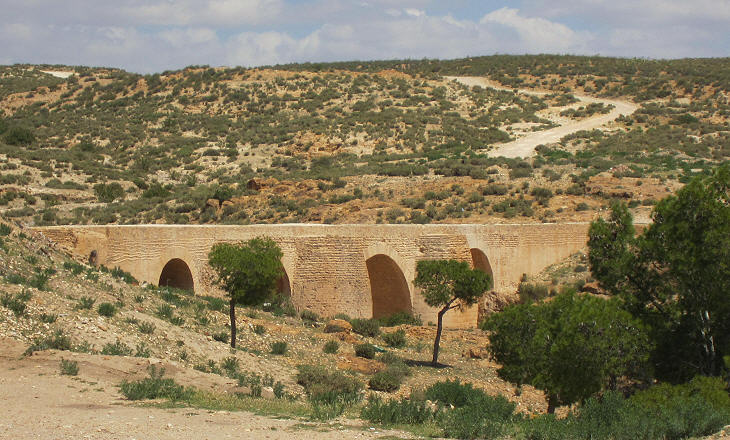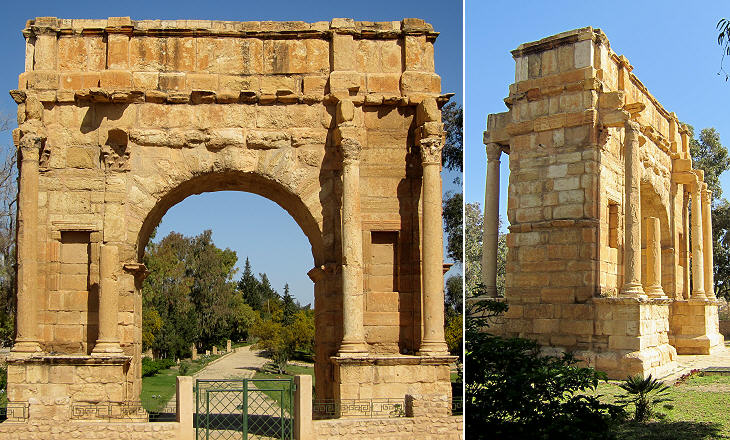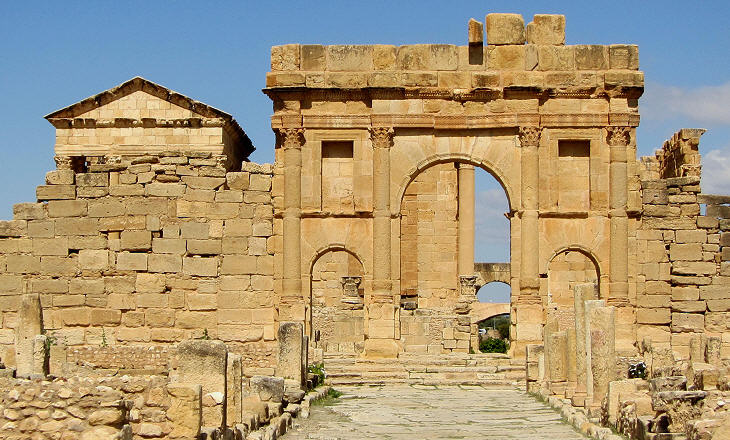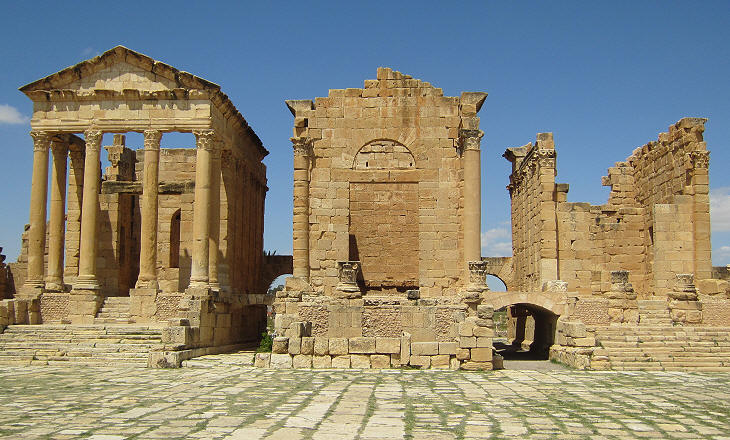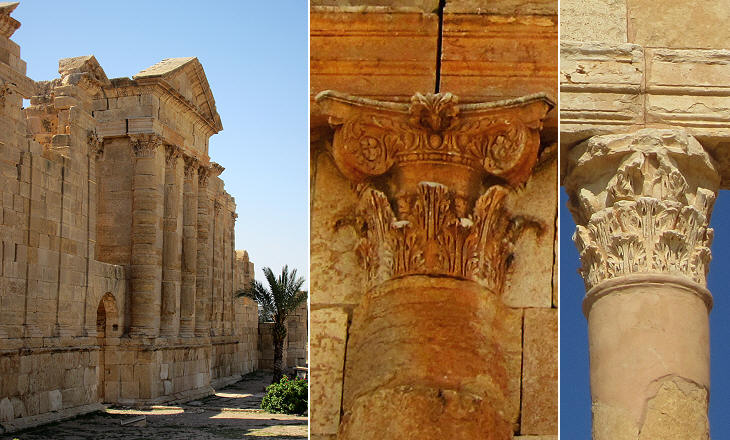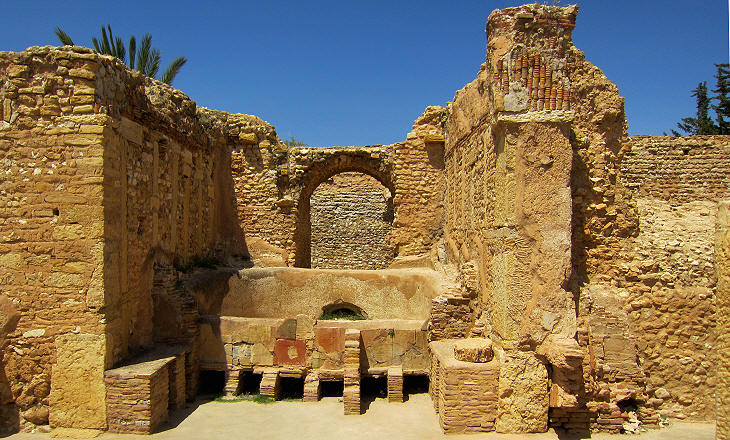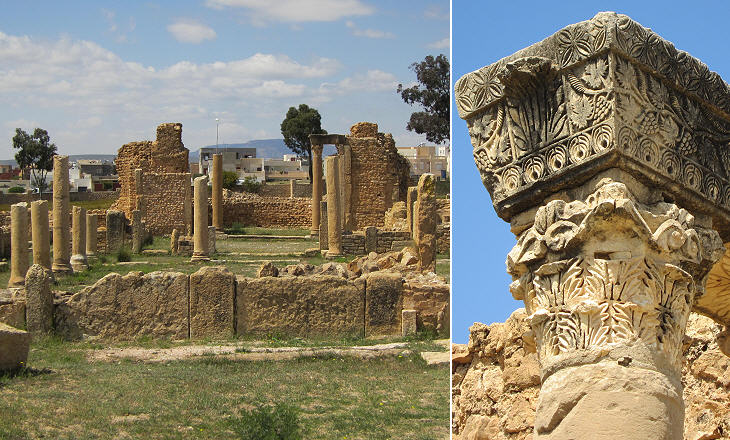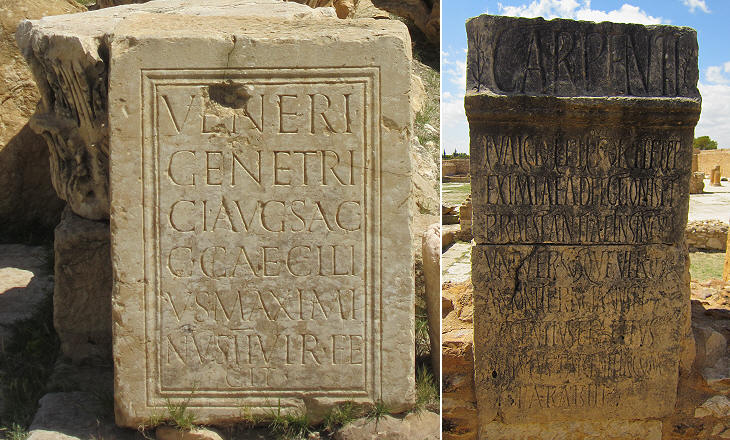  What's New! Detailed Sitemap All images © by Roberto Piperno, owner of the domain. Write to romapip@quipo.it. Text edited by Rosamie Moore. Page added in August 2012 and revised in April 2015. |
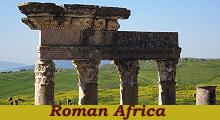 - Sufetula (Sbeitla) - Sufetula (Sbeitla)(temple at Thugga) We came to Spaitla, the ancient Sufetula. This city lies about twelve leagues to the south of Keff, and is one of the most remarkable places in Barbary for the extent and magnificence of its ruins. From Travels or Observations relating to several parts of Barbary and the Levant by Thomas Shaw - 1808.
Spaitla is pleasantly situated upon a rising ground, shaded all over with juniper trees. A little brook glides along the N.E. side of it, which afterwards loses itself in the sand. (From Travels ...). Sufetula is located in Central Tunisia, a region which was a great producer of olive oil at the time of the Roman Empire. Today it is the poorest part of the country and by comparing the description of its landscape in 1808 with current images one feels that things have probably worsened since then. Some attempts have been made to restore olive oil production, but esparto, a grass employed for the manufacturing of cords and baskets, has been the main crop of the region for the last centuries.
Sufetula was founded by veterans of Legio III Augusta, the Roman legion stationed in Africa, at the time of Emperor Vespasian. It has the typical design of Roman towns with a grid of perpendicular streets. It was situated along the Roman road which linked Carthage to Theveste, a town in today's Algeria where the legion was stationed.
For there is first of all a sumptuous triumphal arch of the Corinthian order, consisting of one large arch, with a lesser one on each side of it, with these few words of the dedication remaining upon the architrave "Imp. Caesar Aug./Onin//Suffetulentium/Hanc edificaverunt/et DD.PP." (From Travels ...) Today the arch is believed to have been built at the time of Emperor Antoninus Pius. It gave access to the Forum of Sufetula, which, similar to what occurred at many other locations (e.g. Thugga and Musti), was turned into a fortress by the Byzantines in the VIth century. You may wish to see the walls of the fortress in the introductory page.
From this arch (..) we pass (..) to a spacious court. Here we have the ruins of three contiguous temples, whose several roofs, porticoes, and facades, indeed are broken down, but the rest of the fabric, with its respective columns, pediments and entablatures, remain perfect and entire. (From Travels ...) The Capitolium was a temple dedicated to Jupiter, Juno and Minerva, the three deities which were worshipped on the Capitol Hill of Rome. The design of the Capitolium of Sufetula is almost unique because the three deities were worshipped in separate cellae and yet it would be erroneous to speak of three temples because bridges linked them and allowed access to the central cella which did not have steps.
The Capitolium was built at the same time as the arch and as other similar temples at Thugga and Thuburbo Majus. These temples were mainly meant to celebrate the achievement of a higher status of the town in the Roman administrative system or the granting of Roman citizenship to its inhabitants. During the IInd century AD the Roman Empire experienced a long period of peace and economic growth. One of the consequences was that Rome was no longer perceived as the centre of a foreign power, but as that of a community which the citizens of the provincial towns were proud to be part of.
Sufetula was a town of some 5,000 inhabitants in the interior of the country and, even though the Romans founded towns in the oasis of southern Tunisia, it was almost at the border of the Empire. Yet its temples were accurately decorated with mouldings and capitals, which indicates a wide circulation of treatises on architecture and engineering. Vitruvius, the Roman writer of De Architectura, a treatise on such matters, said that a building should have firmitas, utilitas, venustas i.e. that it should be solid, useful and beautiful and at the Capitolium of Sufetula his guidelines were complied with.
The main baths of Sufetula were located a short distance from the Forum. Archaeologists have identified a twin set of halls which has led them to believe that a section of the baths was utilized in winter and the other one in summer. Inscriptions making reference to restorations indicate that the baths, which were built in the early IIIrd century, were in use during the Byzantine period, possibly until 647 when Sufetula was plundered by Arab raiders.
Archaeologists have identified at least four other baths, one of which was part of a private house which has been in part destroyed by the construction of a modern road. Professional excavations at Sufetula started in 1906 and were abandoned a few years later. Unfortunately steps were not taken to forbid building in areas which were likely part of the ancient town.
The theatre of Sufetula was built at the edge of a ravine created by the small river to the east of the town. What we see today is largely a modern reconstruction. Sufetula is a "must see" among the archaeological sites of Tunisia, but Sbeitla, the modern town, does not benefit much from its visitors, who rarely spend a night there, as they usually see it on their way from Kairouan (north-east of Sufetula) to the oasis of southern Tunisia.
The north-western part of Sufetula is still to be entirely excavated. An arch dedicated to Emperor Septimius Severus marked its northern entrance and beyond the arch the site of a small amphitheatre has been identified. This section of the archaeological area is remote from the main monuments and a warden followed me there to keep an eye on me and on the sellers of ancient coins and unprofessional guides who try to earn their living by harassing visitors. In April 2015 Mr. Hammadi Dali from Sbeitla wrote me to say that my comment was no longer appropriate.
A large Roman house indicates that the part of the town near the northern entrance was mainly a residential one. The house was enlarged by acquiring parts of other adjoining houses and it was used in Byzantine times. It is named after a mosaic portraying the Four Seasons which has been moved to the Museum of Bardo in Tunis.
Move to page two to see the Christian monuments of Sufetula. Move to: Introductory Page Bulla Regia Carthago Mactaris Musti Neapolis Sicca Veneria Simitthus Thuburbo Majus Thugga Thysdrus Uthina Utica Ziqua Mosaics in the Museum of Bardo  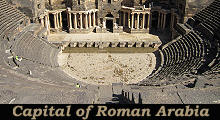 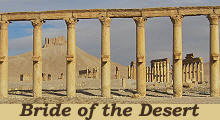 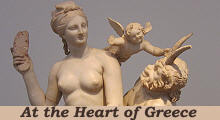
|
